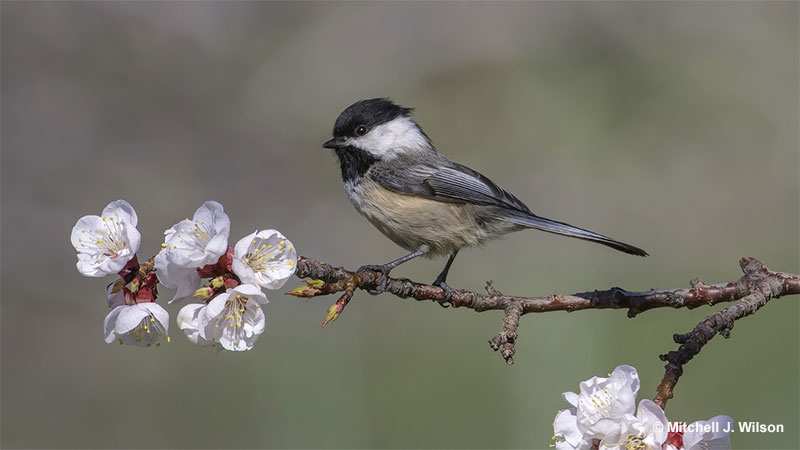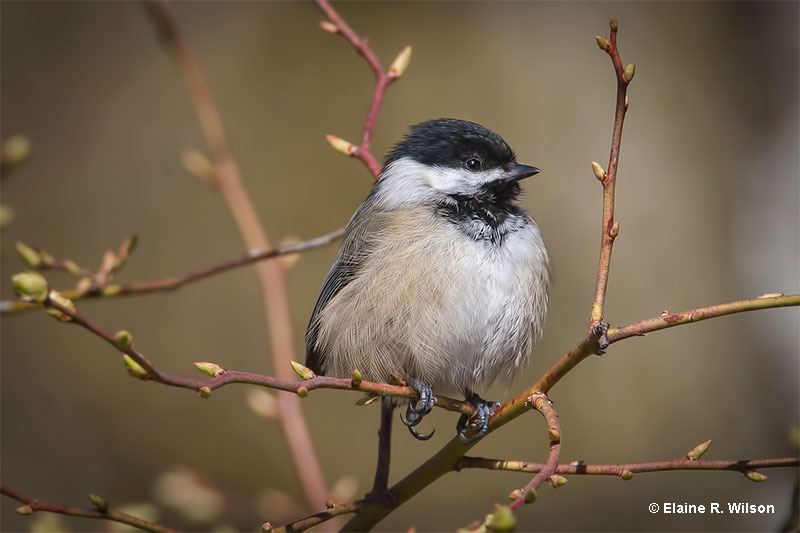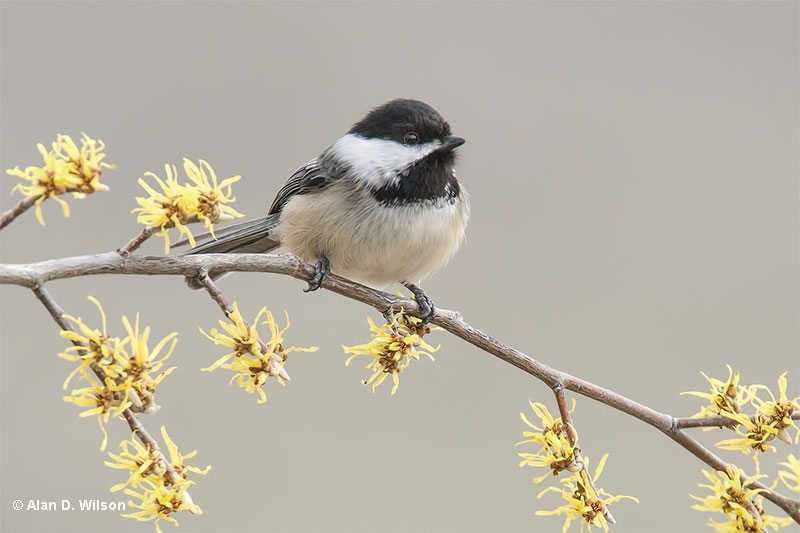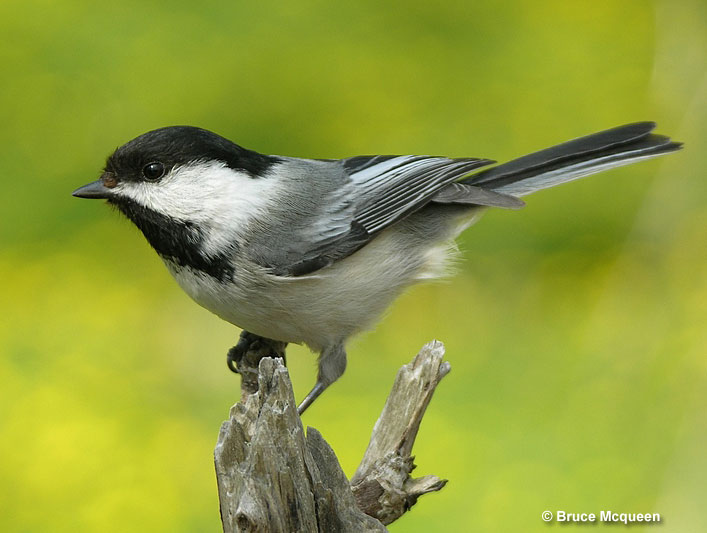
Maine is a rather small, northeastern state with scenic rocky coastlines, lots of lobster, and 35,385 square miles of northern forests, blueberry bogs, and other habitats. Nearly 1,362,350 Maine residents also share space with a wonderful selection of birds.
Maine state bird is the beautiful Black-capped Chickadee, which happens to be one of the most common birds of the state. In fact, birders have found 470 bird species in Maine!
This handsome and friendly little bird lends a happy touch to backyards and woodlands in every corner of the state.
On this page
State Bird
The Black-capped Chickadee became the state bird of Maine in 1927. A few years before then, the General Federation of Women’s Clubs had begun to work on campaigns for each state to choose an official bird.
To help make that happen, women’s clubs held meetings with officials and educators to promote birds and the importance of state symbols. In many cases, they encouraged state birding clubs to sponsor public votes for state birds. These polls usually took place in schools and were used to choose an official bird in several states.
In Maine, though, the state bird was picked after someone simply wrote to the state legislature in 1927. This person nominated “the chickadee.” The state legislature thought this was a perfect idea because they wasted no time in officially declaring the “chickadee’ as Maine’s state bird.

Little did they know, the only problem is that there isn’t just one species of “chickadee” in Maine. There are two!
The Black-capped Chickadee is common throughout the state, while the Boreal Chickadee lives in bogs and other boreal forest habitats.
Since the Black-capped Chickadee is a cute and common visitor to backyards and bird feeders, most people feel this species was indeed “the chickadee” picked by the state legislature.
However, some folks believe a new vote should be held to clarify which chickadee species truly represents the state. Whether one gets picked or the other, either way, Maine would still have an adorable and much appreciated state bird.
Fun Facts about Black-capped Chickadees
- Black-capped Chickadees have an excellent memory. They can recall where they have stored hundreds of seeds and other bits of food to eat during the winter months.
- Although they can carry several seeds in their beak, they hide each seed in a different spot.
- These birds act as “leaders” in mixed flocks of small birds, especially in the winter. Their frequent vocalizations attract nuthatches, kinglets, and other songbirds that move with or follow chickadees through the woods. They forage near them because chickadees are quick to give alarms when they spot a hawk or other predator.
- Black-capped Chickadees prefer to roost on their own. Although these little birds are very social, they don’t roost together. Instead, each bird sleeps in its own little tree cavity. Sometimes, they excavate a crevice in rooted wood to create their own little sleeping spot.
- Learning chickadee calls is one of the easiest ways to find other birds. Since migrating warblers and other small birds move with chickadees, if you can locate a chickadee flock in a park or woodland, you’ll probably find other birds too.
- Although the Black-capped Chickadee is a regular visitor to feeders, it only gets 20% of its food from seeds at feeding stations. Feeders act as an important food source but much of its diet still comes from woodland habitats.
Identification
The Black-capped Chickadee is a small and dainty bird with a big, round head. It is around 5.25 inches long, has a wingspan of 8 inches, and weighs .39 ounces.
Males and females look the same but male birds are slightly bigger than females. Older birds also tend to be larger than young birds but all of these size differences are impossible to tell in the field.

Black-capped Chickadees have a black cap that extends to just below their eyes, and a white patch on their face that widens and extends back onto the side of their neck.
They also have dark eyes, a stubby black beak, and a black throat. The rest of their upperparts is gray, and the rest of their underparts is white with pale buff flanks.
These little birds have grayish, rounded wings, and a fairly long, gray, rounded tail. Black-capped Chickadees also have a lot of white edging in the feathers of their wings. This characteristic is one of the main plumage differences that separate this bird from the Carolina Chickadee. However, the best way to separate them is by range and their vocalizations.
The Black-capped Chickadee usually makes brief flights between trees and other vegetation. It flies with a burst of rapid wingbeats and glides.
What do Black-capped Chickadees eat?
The Black-capped Chickadee eats a variety of plant and animal food. These small birds eat lots of seeds and small nuts. They are especially fond of sunflower seeds at feeders. However, they can also visit a feeder to feed on suet.
In the woods, these small birds forage for a wide variety of small insects, caterpillars, spiders, and insect eggs. This adaptable species can also eat berries and even carrion. Black-capped Chickadees find these food items by moving through trees and bushes, and inspecting back, twigs, and foliage.
When they see an insect or seed, they quickly catch it with their beak. If the bug or seed is big, they can hold it down with one of their strong feet and peck at it with their strong, stubby beak.
While foraging, Black-capped Chickadees can hang upside down, briefly hover to glean a bug from a leaf, or do other acrobatics.
Call
The Black-capped Chickadee is a very vocal bird that seems to always have something to say. It sings a clear, brief whistled song, “fee bee….fee bee”, and makes various types of chattering sounds.
One of those sounds is a commonly heard series of high-pitched calls followed by nasal notes. It usually sounds like the bird is saying its name, “tseetseetseetsee chick uh dee dee dee….chicka uh dee dee dee”.
These vocal birds also make other brief “chek” and “tseet” calls, and scolding notes. If they see a hawk, Black-capped Chickadees make a series of easily recognized, anxious, high-pitched calls. Learning this alarm call is a great way to know when a hawk is in the neighborhood!
Behavior
Black-capped Chickadees are social birds almost never seen on their own. Although pairs defend nesting territories, at other times of the year, they roam through wooded areas with several other, unpaired chickadees, and additional small birds.

This species mate for life and often visits feeders. They tend not to be afraid of people and can also become very tame. The Black-capped Chickadee is one of the few bird species that can quickly learn to fly in and take seeds from your hand!
Black-capped Chickadees need areas with mature trees but are common birds in parks, backyards, and a wide variety of forested habitats. Since they are such vocal and friendly birds, they are also pretty easy to find.
While they move through the woods in chattering groups, chickadees can briefly hover in front of vegetation, clamber through branches, and entertain birders by hanging upside down on twigs.
Frequently Asked Questions
How many bird species are in Maine?
There are 470 bird species in Maine. This is the number of species on the official bird list for the state.
What is the rarest bird in Maine?
The rarest bird in Maine is the Steller’s Sea-Eagle. Not only is this the world’s largest eagle, it usually lives in northeastern Russia! In 2022, an adventurous Steller’s Sea-Eagle wandered to a few states and provinces including Maine. Various other rare birds have found their way to Maine including the Red-billed Tropicbird, Redwing, and Tufted Puffin.
What birds is Maine known for?
Maine is known for Atlantic Puffins and other seabirds, boreal species like the Bicknell’s Thrush and Boreal Chickadee, and other woodland species.
More in Maine: Most Common Birds | Hawks | Owls | Ducks

